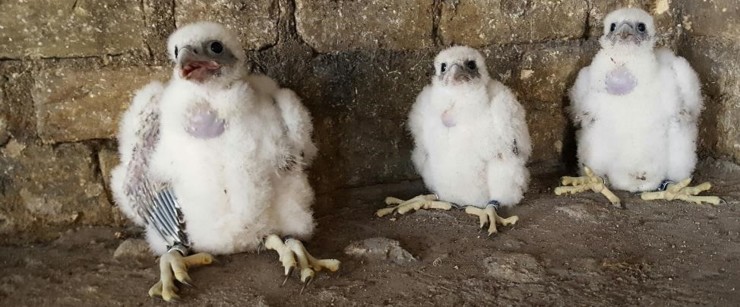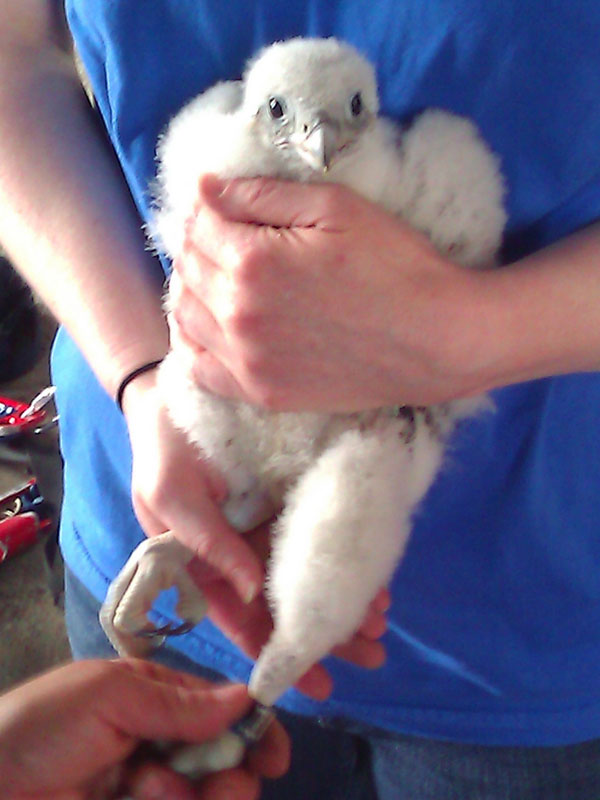Peregrine Falcons
Peregrine Falcons’ natural habitat is high cliffs and mountains. The two City Hall/Courthouse towers offer cubbies and peaks for nest sites. A pair of Peregrine Falcons was first seen regularly around the
Peregrines continued to frequent the building for the next couple of years, but no nest or offspring was seen until spring 2000, when building tenants began to notice intense falcon activity. In July, an unbanded female fledgling was found by the street and christened Pamela. A couple of weeks later another fledgling was found grounded and sick. In 2001, 2002, and 2003, the unidentified adult female falcon laid eggs that never hatched. The adult male falcon was Will YX4, whose primary nest was at the Multifoods Tower with another female.
On May 25, 2005, two of four eggs hatched in the 5th St. Tower. Two female chicks (Erica and Felicia) were born to the resident female falcon and a new male adult falcon, Bor, who was fledged in 2003 at the Monticello NSP smokestack. On June 4, 2007, one male chick was banded and officially named Alejandro.
After 2007, our aging resident female peregrine was unable to produce viable eggs and we were without chicks for a few years. She passed away some time in 2011, but her last official sighting in March of 2011 made her the oldest known peregrine falcon in North American at 19 years and 10 months of age.
In 2012 a new female, Dot, took up residence in the tower and produced one female (Zara) and three male chicks (Bud, Hens Solo and Screech) with Bor. Dot was hatched in 2007 in Eagan and was nesting in Elk River for the past few years until her move downtown. (Nesting locations are typically “owned” by the male and females vie to claim him as their mate). In 2013, Dot and Bor had two male (Taka and Nick) and two female (Eve and Aerial) chicks. The couple had three male chicks (Morse, Orton and Kees) and one female (Haglin) in 2014 and three male chicks (Jack, Woody and Braydon) and one female chick (Emily) in 2015. Three more chicks were born in 2016 and pictured below: two females (Kateryna & Phantom) and one male (Upupa Epops).
Peregrine Falcons have plenty of food here and few natural predators. Typically, they do not migrate in the winter due to adequate food supply. One of the falcon’s most spectacular skills is catching prey mid-flight, usually pigeons or starlings. Occasionally, Municipal Building Commission staff have received complaints of bird remnants on the sidewalk. Building tenants may also see a fledging stranded on the ground or in the moat as the youngsters learn to fly. Fortunately, the Raptor Center staff are just minutes away at the St. Paul Campus, or MBC staff will return an uninjured fledgling to the tower.
Each year the Raptor Center comes to band the falcons, collect bad eggs, take blood samples from the peregrine chicks, and check on the birds’ overall health. The Municipal Building Commission would like to thank the Raptor Center at the University of Minnesota. Visit the Midwest Peregrine Society for more information.





